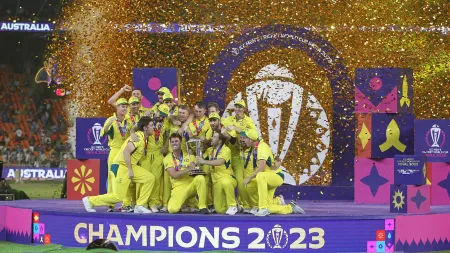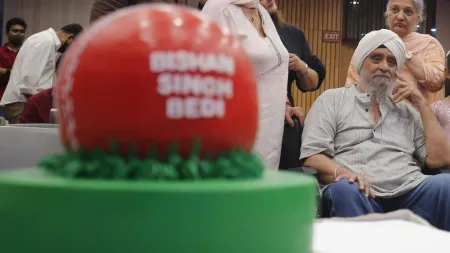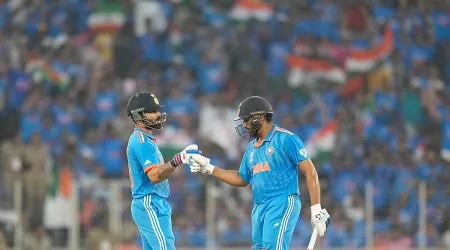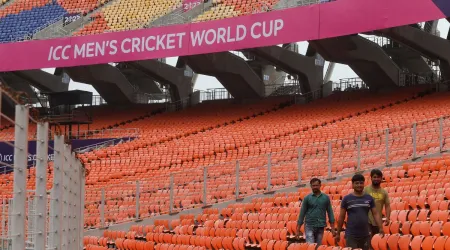- India
- International
The art of storytelling in cricket needs to be revived
Television struggles because there is simply not enough time because of necessary commercial requirements.
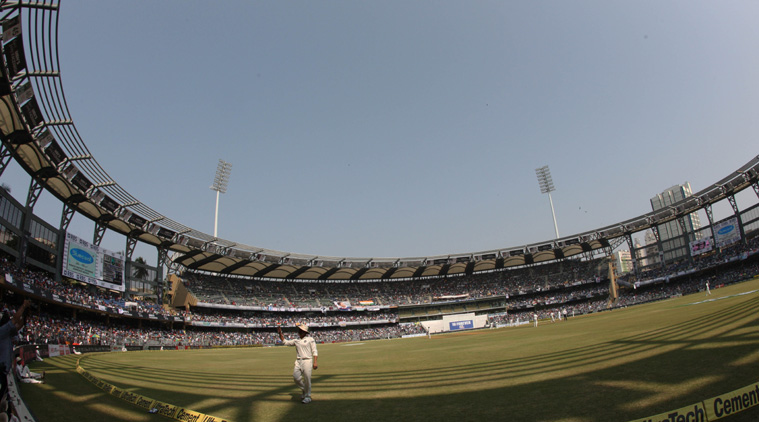 Sachin Tendulkar during his last Test match at the Wankhede Stadium, Mumbai (Source: Express Photo by Neeraj Priyadarshi)
Sachin Tendulkar during his last Test match at the Wankhede Stadium, Mumbai (Source: Express Photo by Neeraj Priyadarshi)
Rahul Dravid was correct, predictably correct, at the Dilip Sardesai Memorial Lecture. He wore a jacket and tie, was punctual, respectfully polite to older cricketers and read from a prepared text that was printed in a large, bold font. Only occasionally his impish side surfaced, as it inevitably does when talking of Virender Sehwag (or when he let “any gender” slip through while referring to partners on tour) but largely he was very appropriate. It is a good word, appropriate. It defines Dravid. It was the topic that he chose though that was out of the box, in fact delightfully so. He spoke, not of the issues facing today’s game, of different formats, of power and responsibility..no, he spoke instead of cricket’s oral traditions.
He talked about the stories his father told him that attracted him to the game, of how they created in him a curiosity and a hunger for cricket, of train journeys where the inconvenience of sitting next to the toilet was overcome by the stories seniors were telling him. It was refreshing. We spend so much time complaining and trying to correct the world that we leave ourselves little time for the real reason we were drawn to the game; the stories, the narrative, the contest. Heroic deeds, disappointments, even a bit of warm fiction morphing into reality. Dravid reminded us of that for so many of us have been drawn to this game through the enthusiasm of an elder.
I was often transfixed by stories my father told me about the legendary AFS Talyarkhan, about how he did ball-by-ball commentary the whole day, all by himself and how, when asked to share the microphone he opted out. I heard stories of AFST’s love for Prof DB Deodhar and his boys when they won the Ranji Trophy in 1939-40 and 1940-41 when the grand professor was a proud 49, of how when SW Sohoni took his first run, AFST would say “only 99 to go for his century” (it made me look up Sohoni’s scores: 96 and a century in successive finals!). I wonder now if that planted a seed in me to try and become a commentator too!
Many years later I was honoured to meet AFST himself and I did a long interview with him that Sportsworld carried over three issues. It was beautiful to hear him talk about Amarnath and Amar Singh, of Nayudu and Deodhar, of Merchant and Hazare, of Mankad and Mushtaq Ali. We asked him to write a column for Sportsworld and he said he wanted “Rs 400”.
It was like Dilip Kumar demanding a lakh of rupees from a producer now. When AFST passed away, I got a call at 1 am. On a piece of paper, I scribbled an obituary, then typed it out neatly on a manual typewriter, almost as if typing it that way was a form of homage too. At 7.30 in the morning someone from Mid-Day came home to pick it up so it could be typeset in time to be printed for the early afternoon edition.
I remembered too, as Dravid spoke, of stories that were passed down year after year in local cricket. There were lower division legends in Hyderabad cricket like Hackett, Percy Davar and Waheed Pasha and I often sat in a history class wondering how it would be to face them (even at number 11 in my first year at school!). When I did, some of them at least, I passed the stories to the next batch!

Dravid wondered if, within the cricket fraternity, mobile phones and other gadgets would take the joy of conversation away. He spoke warmly of learning from Roger Binny as he dropped him home and now, of talking to Stuart Binny and of the need to have time for it. And I wondered if that was true of my profession as well. Are there enough stories being told? Are we only propagating the science and the scandal of the game? Or indeed its commerce? Are deeds being told, and written, in memorable words? I think there are two reasons for the decline in storytelling in mainstream media. Television struggles because there is simply not enough time because of necessary commercial requirements and I know Star Sports is trying hard to address that. And barring a newspaper or two, no one seems to trust their reporters enough to become story tellers. The “quote” and the ghost written celebrity column is all there is room for. That is why you must have radio and it baffles me why we have turned our back on quality radio. I listen sometimes and I think someone is beating me up with a stick for doing so.
But we must tell stories. We can never give up on it. I believe in the thought that we are custodians of cricket for the next generation. Storytelling is a good way to live that responsibility. Not as a key performance indicator, but just for fun. It is the primary reason we are in sport. I am delighted Rahul brought it up (in a story he would always be Rahul wouldn’t he, never Dravid!)
Get latest updates on IPL 2024 from IPL Points Table to Teams, Schedule, Most Runs and Most Wickets along with live score updates for all matches. Also get Sports news and more cricket updates.


















